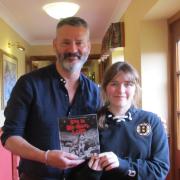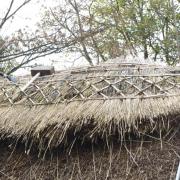
Over the summer period, Wimbledon and Putney common were struck with a natural phenomenon, affecting our local eco-system and even ourselves, the Oak Processionary Moth
The Oak Processionary Moth was accidentally introduced into a site within West London in 2005 through a delivery of tree stock. Despite extensive outbreak control, the moth spread into Greater London and even as far as Surrey. In particular, Wimbledon and Putney common’s numbers have stayed fairly low since 2011, however, research teams have found the numbers increasing each year.
The moth’s are not the threat, but in in fact, the caterpillar before their transformation into the moth. The Caterpillar’s contain an irritant called Thaumetopoein which are found in the tiny hairs on the caterpillar; these can appear in a distinctive silken webbing accompanied by similar trails along trunks and branches of oak trees, however, they can become discoloured over time, making them difficult to see. The irritant can cause severe rashes and sore throats as well as breathing difficulties if skin contact is made. The moth began to appear on the Common between April and Mid-July, when exposure to the risks are highest and in July 2019, the plant health services found 70 separate cases of oak processionary moth caterpillars on oak trees in England, Scotland and Wales.
After speaking to Maintenance Manager on Wimbledon and Putney Common, Jack Rowland, he gave an insight on the removal of the caterpillars. Rowland said ‘we mainly remove the OPM Caterpillars in the summer months once it has go to the stage of their lifecycle where they are living within a nest. The main reason for this is that they are easier to locate.’ With members of staff and the assistance of sightings and reports from common users, the oak trees with nests present were easily identified. The high numbers meant the common was split into high and low priority zones, so the operation could be carried out effectively, so if a nest was in a high priority area they would be targeted first by the removal team. The next step is the removal, staff are required to wear overalls, rubber gloves and a full hooded respirator. The nest is removed by placing the operators hand within a sandwich type plastic bag, then scrapping and pulling the nest off of the trunk and into the bag, where the bag is pulled over itself and tied up carefully without any of the nest or irritant hairs being released, then, a blow torch is used to remove any remaining debris. At the end of each removal operation, the equipment is bagged up with the removed nests, and via a licensed wasted disposal company the bags are removed from site and incinerated under controlled conditions to prevent further spread and contamination.
Although the team at Wimbledon and Putney common carried out multiple successful removal operations, the Oak Processionary Moth still poses a threat, especially, in the upcoming spring and summer months.
If you see or have any concerns about the moth, make sure to contact 020 8788 7655
By William Jagla, Hampton School



























